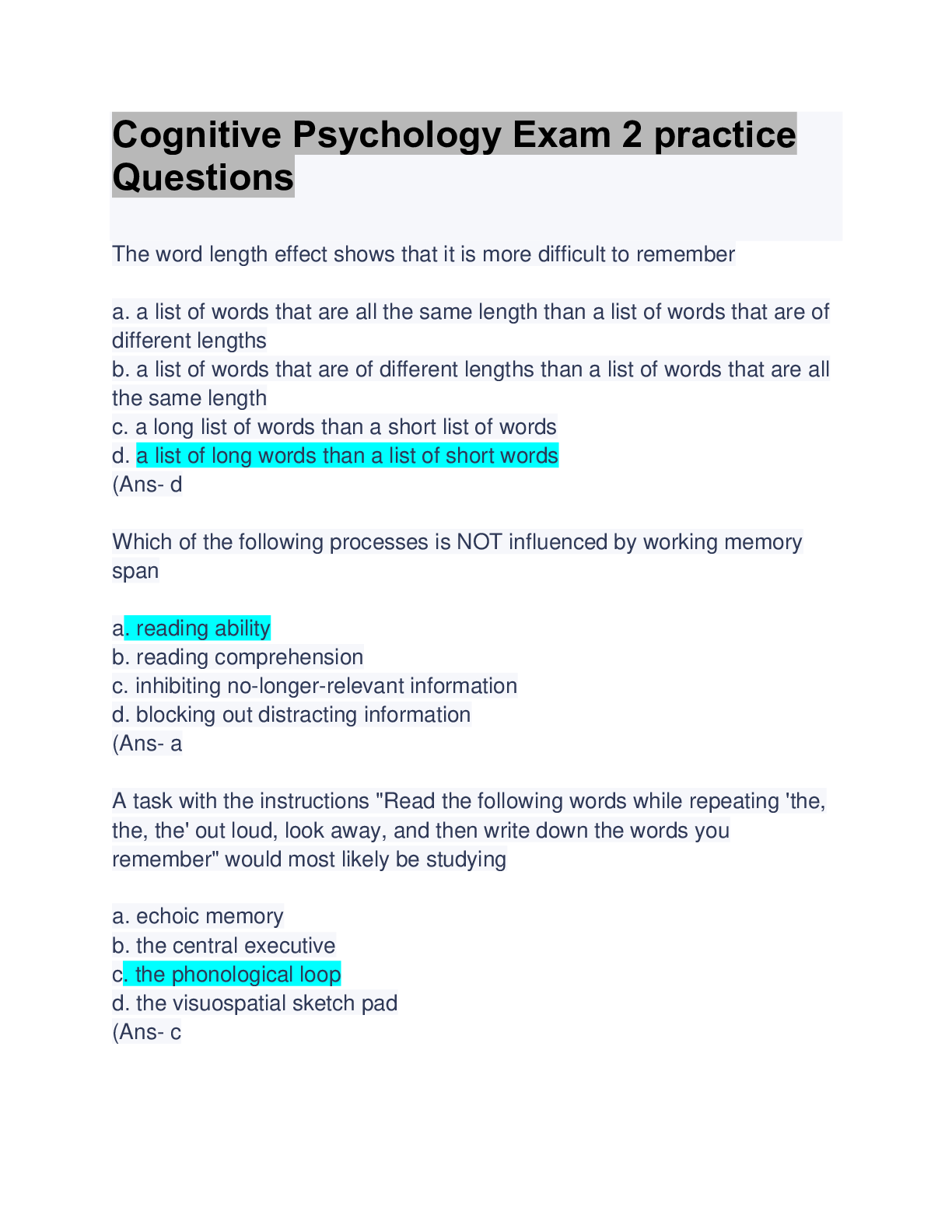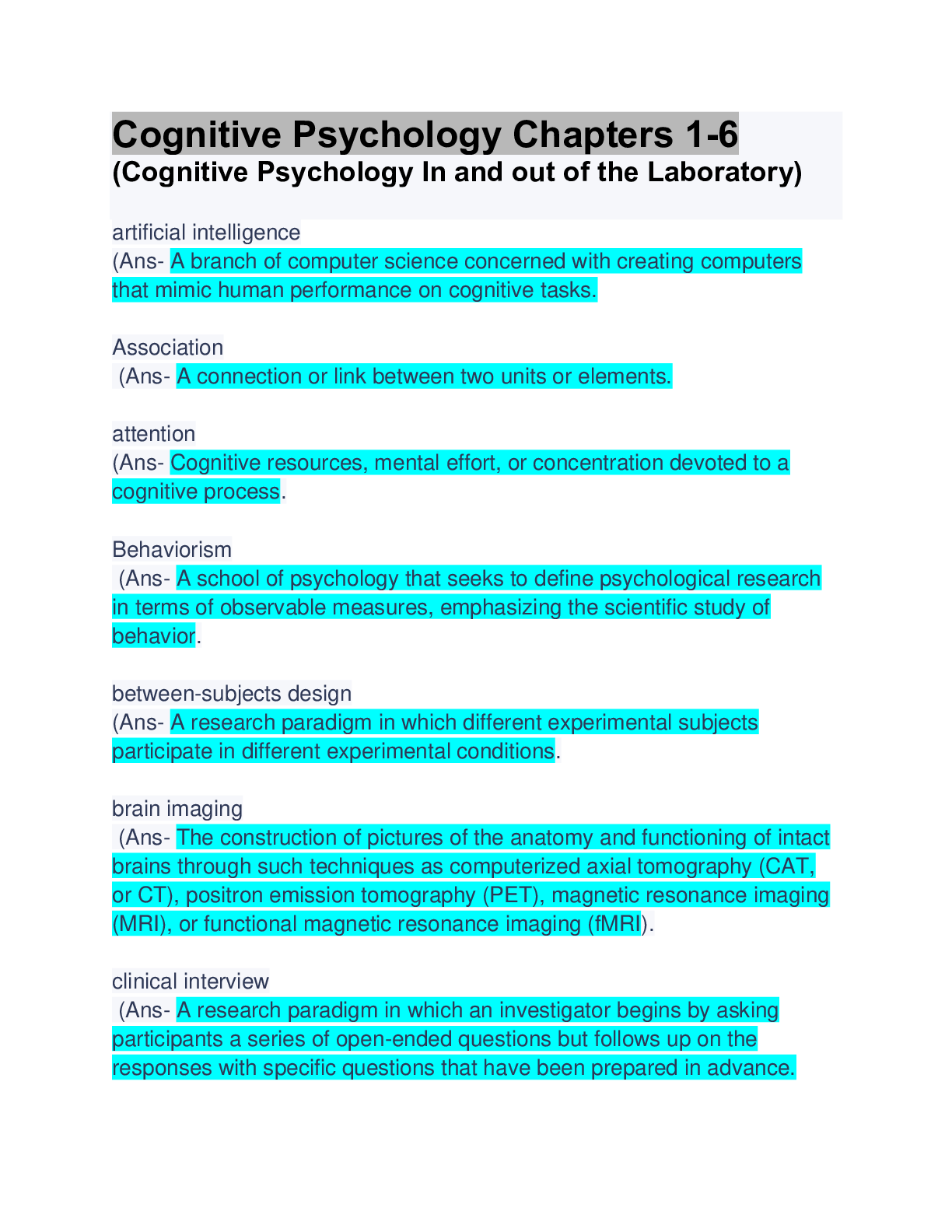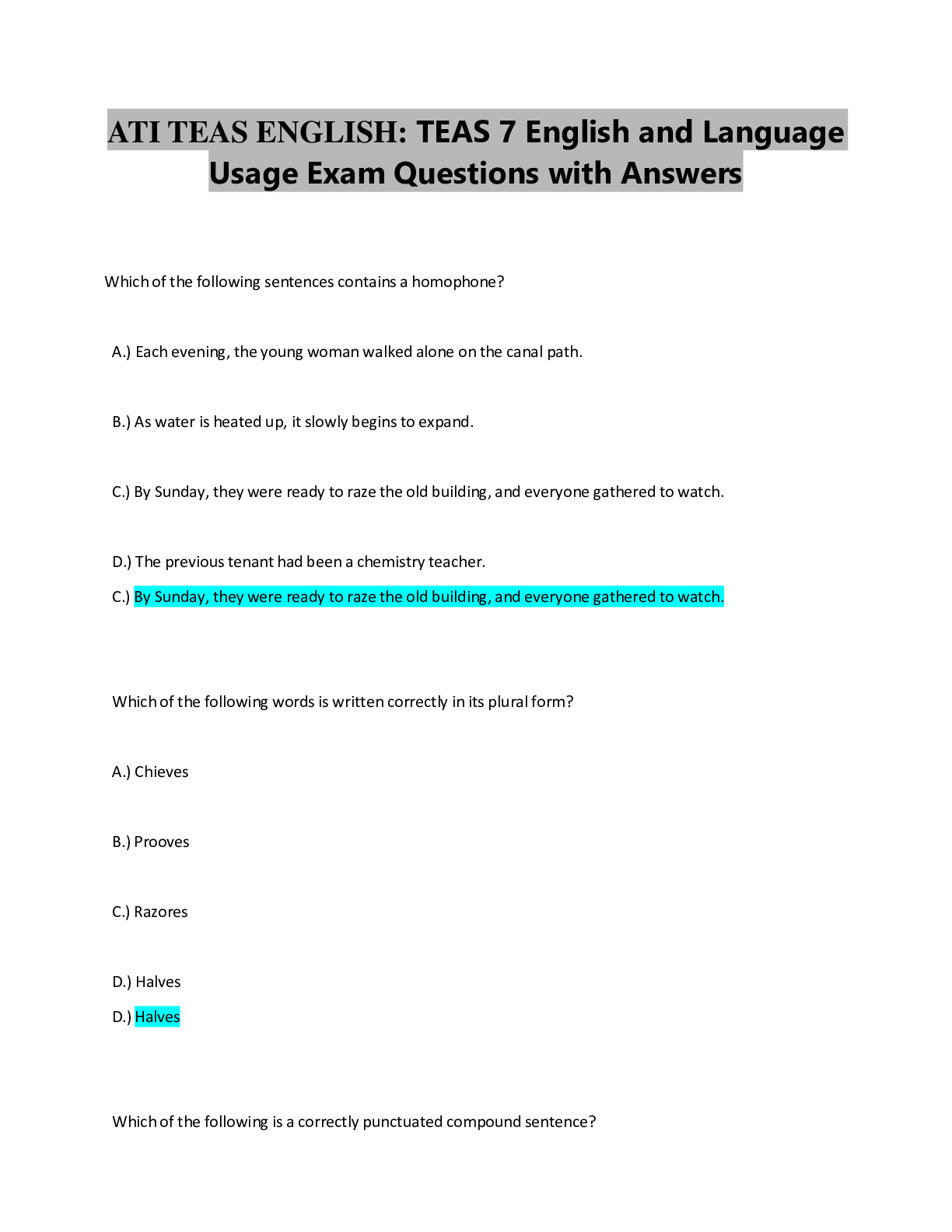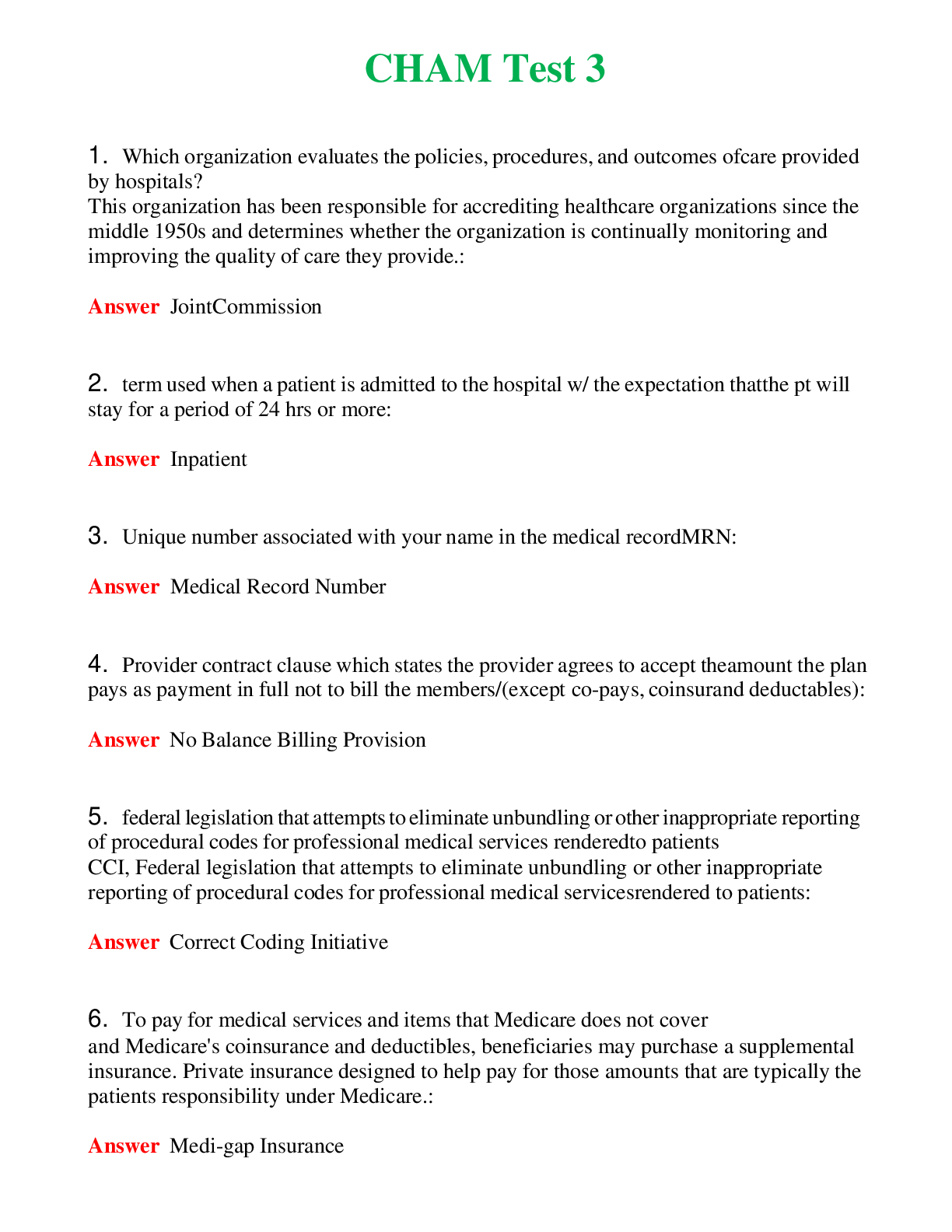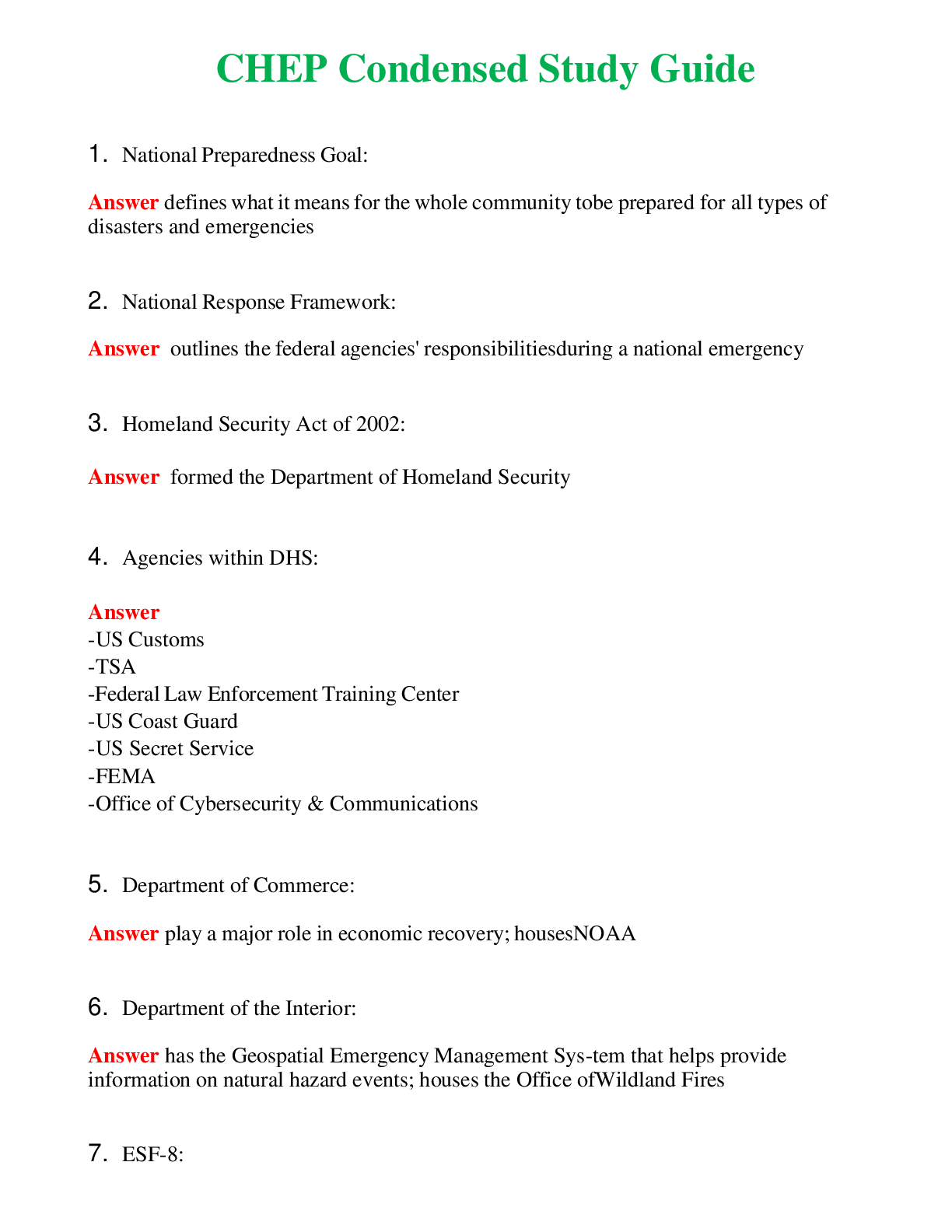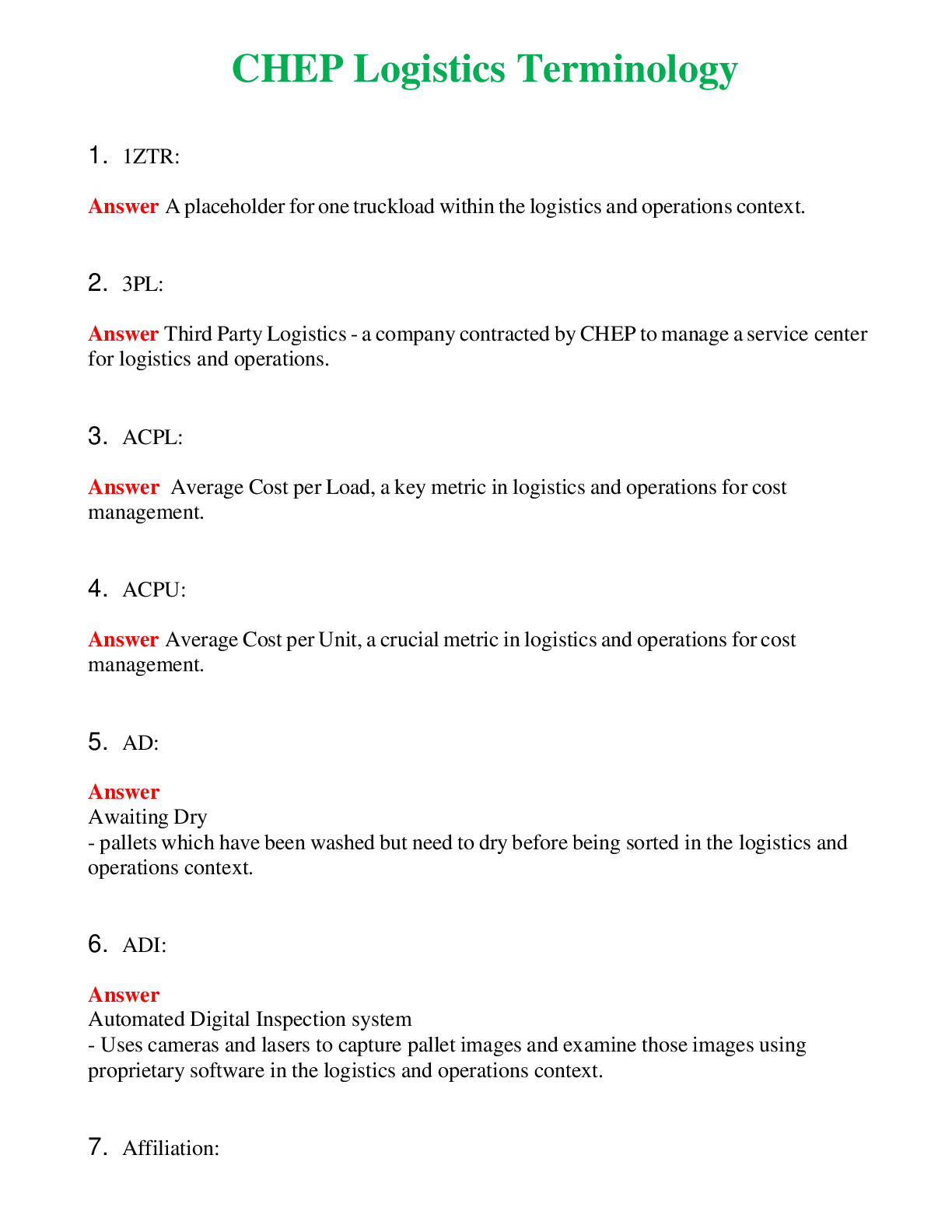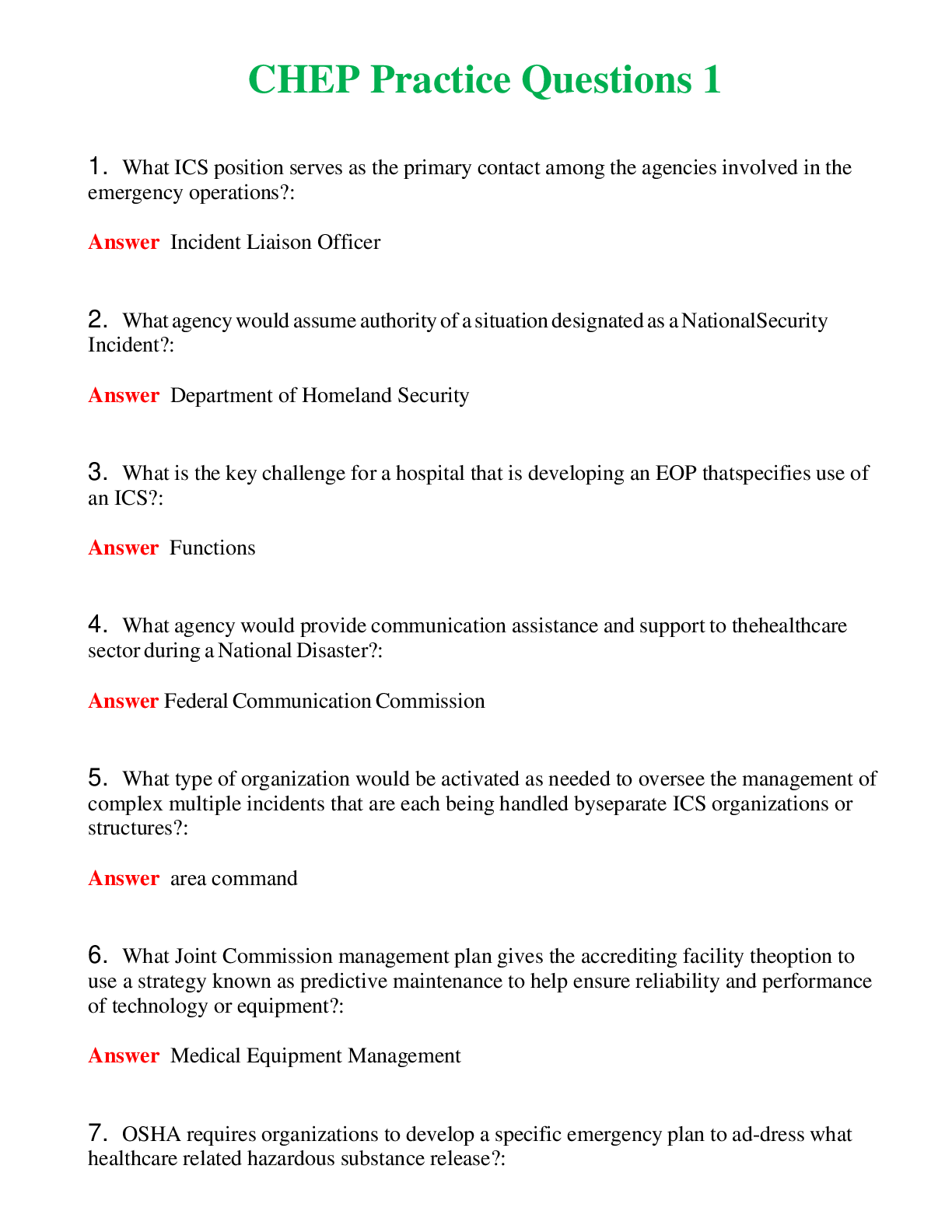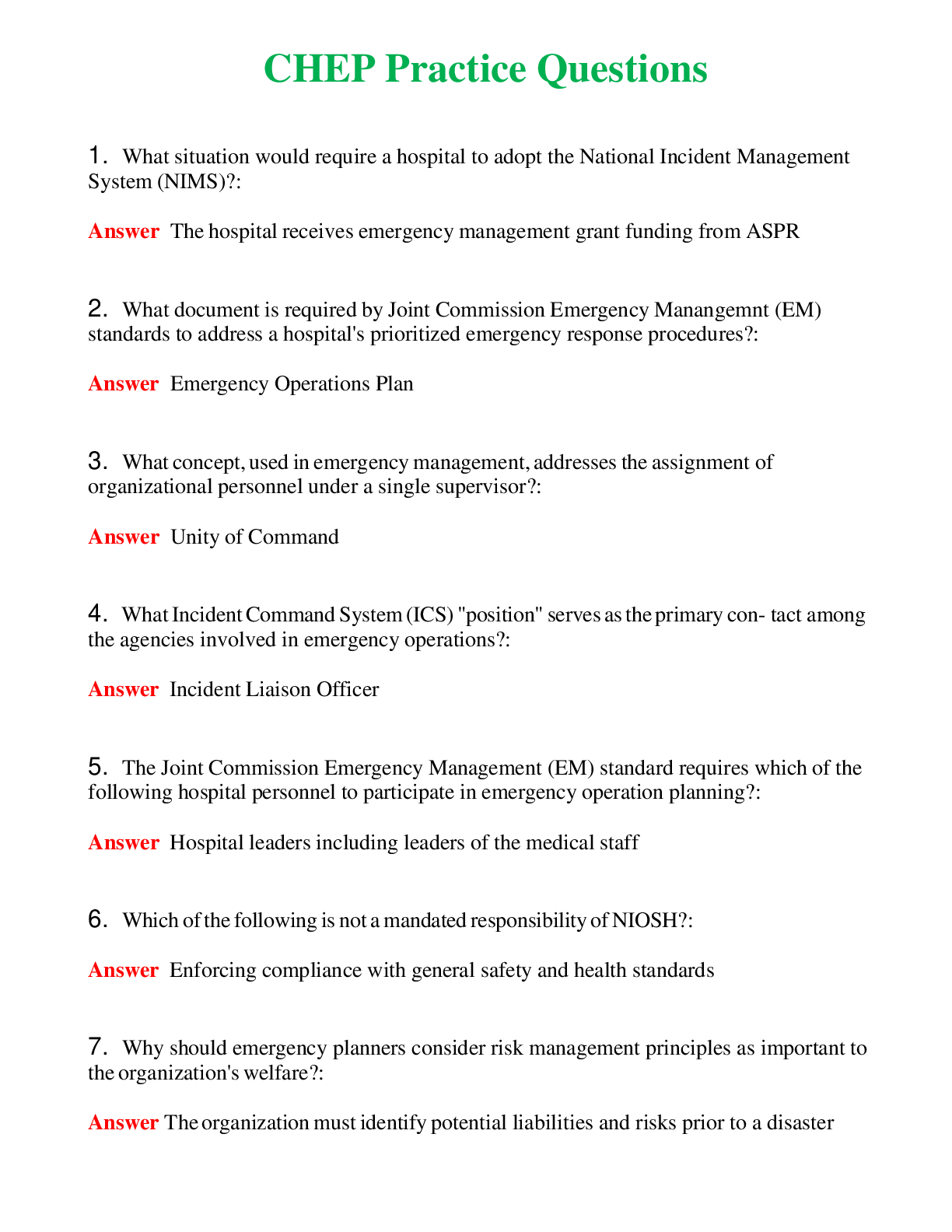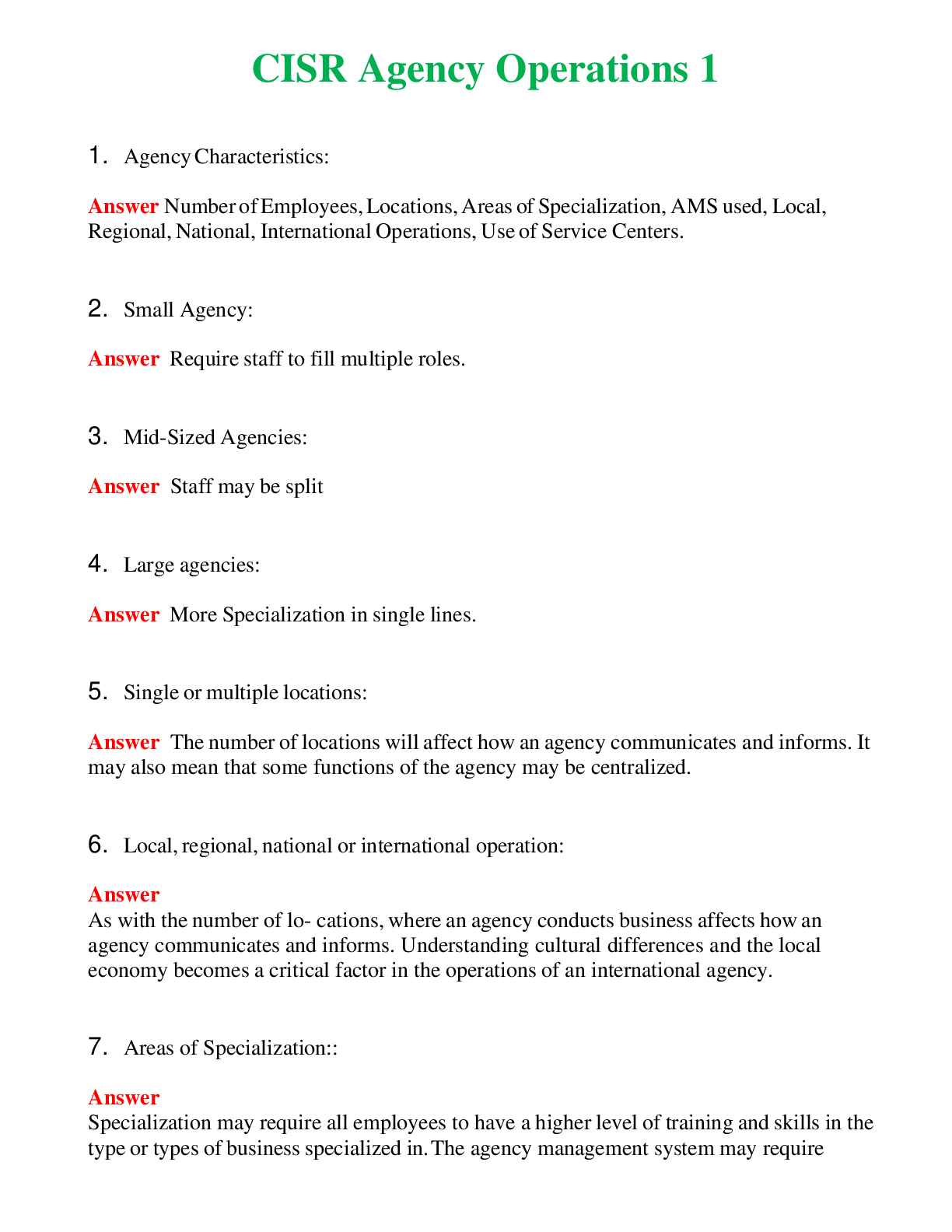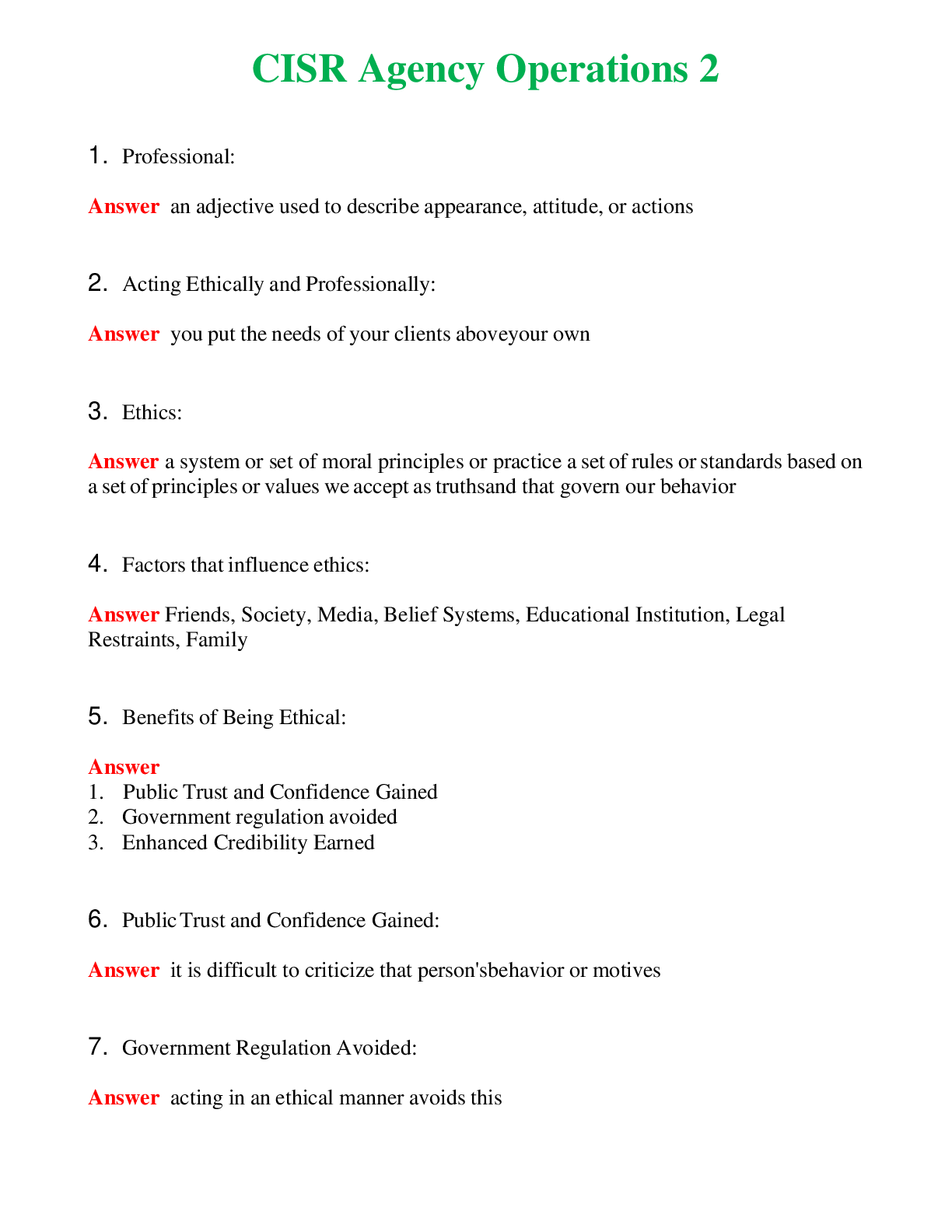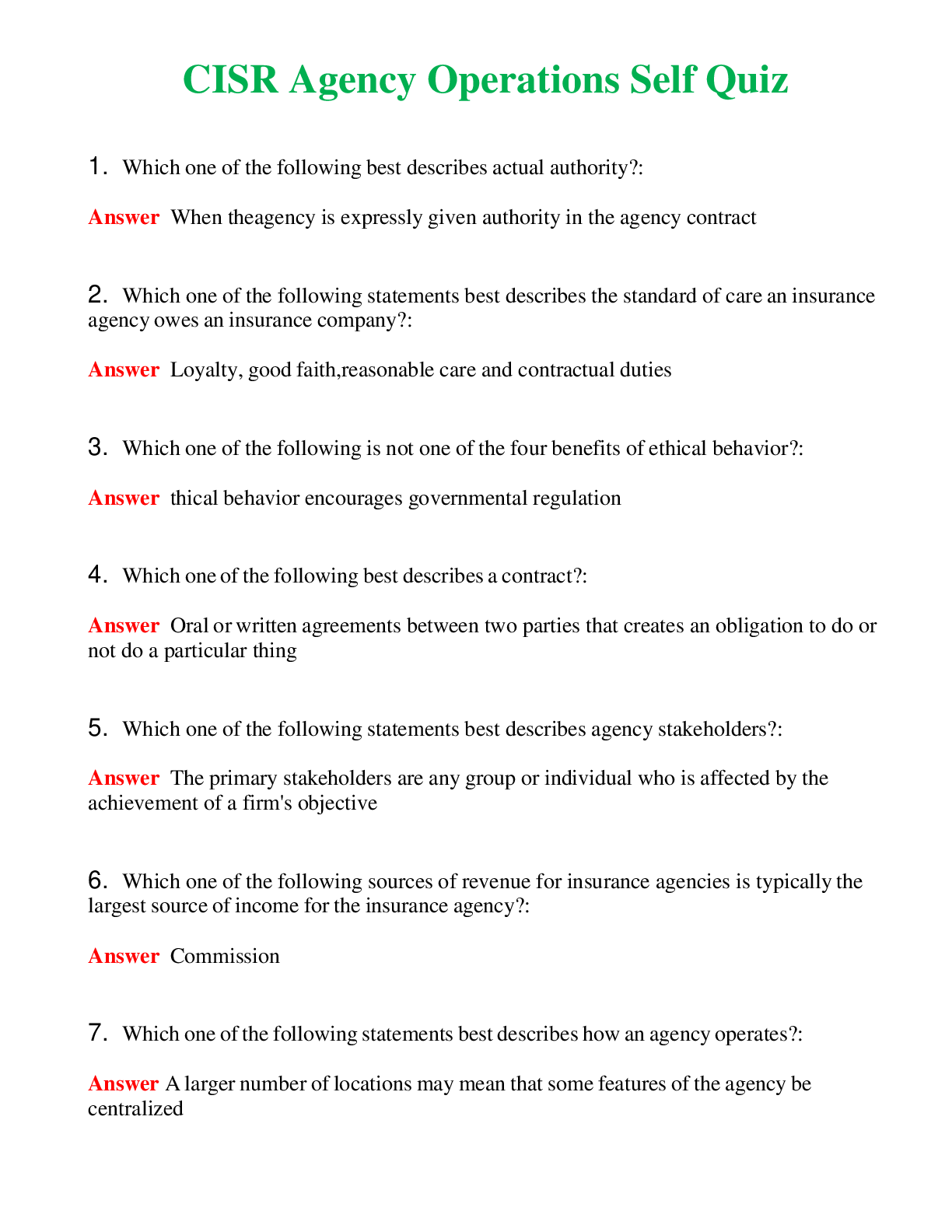Health Care > EXAM > EMT Module 6 Exam: Questions & Answers: Updated Solution; (All)
EMT Module 6 Exam: Questions & Answers: Updated Solution;
Document Content and Description Below
Your patient is a 12-year-old boy who ran his arm through a glass window and has an 8- inch laceration on his anterior forearm. You have applied a pressure dressing and bandage, but these have become ... saturated due to continued bleeding. Which of the following should you do now? A) Apply additional dressing material, bandage it in place, and apply pressure to the brachial artery. B) Remove the pressure dressing and bandage, apply direct pressure with your gloved hand, and elevate the arm. C) Remove the pressure dressing and bandage, apply an ice pack to the wound, and bandage it in place with an elastic bandage. D) Elevate that arm and prepare to apply a tourniquet or consider administering a hemostatic agent. (Ans- D) Elevate that arm and prepare to apply a tourniquet or consider administering a hemostatic agent. Which of the following BEST describes the delivery of oxygen and nutrients at the body's cellular level? A) Hydrostatic pressure B) Osmosis C) Perfusion D) Circulation (Ans- C) Perfusion Which of the following is the MOST effective way of controlling external bleeding? A) Using direct pressure with a dressing B) Using an ice pack C) Running cold water over the wound D) Elevating the affected part (Ans- A) Using direct pressure with a dressing Limiting time spent at a scene can be especially important if the mechanism of injury suggests that the patient could go into shock. In order to keep the time at the scene to a minimum, which of the following assessments or treatments should NOT be performed on the scene? A) Rapid trauma exam B) Splinting swollen extremities C) Immobilization D) ABCs with spinal precautions (Ans- B) Splinting swollen extremities Which of the following distinguishes decompensated shock from compensated stage of shock? A) Cell damage and death in the vital organs B) Delayed capillary refill time C) Low blood pressure D) Altered mental status (Ans- C) Low blood pressure Which of the following may occur when there is bleeding from a large vein? A) Air embolism B) Hypoperfusion C) Transmission of bloodborne illnesses D) All of the above (Ans- D) All of the above Which of the following is NOT part of the circulatory system? A) Heart B) Blood C) Blood vessels D) Brain (Ans- D) Brain Which of the following is a characteristic of arterial bleeding? A) Steady flow B) Spurting under pressure C) Dark red color D) Both B and C (Ans- B) Spurting under pressure External bleeding may be classified according to types. Which one of the following is one of those types? [Show More]
Last updated: 2 years ago
Preview 1 out of 62 pages

Buy this document to get the full access instantly
Instant Download Access after purchase
Buy NowInstant download
We Accept:

Also available in bundle (1)
Click Below to Access Bundle(s)

EMT Module 1 Exam:EMT Module 2 :EMT Module 3:EMT Module 4:EMT Module 5:EMT Module 6:EMT Module 7:EMT Test 3 review:Chapter 9 module Test EMT
EMT Module 1 Exam:EMT Module 2 :EMT Module 3:EMT Module 4:EMT Module 5:EMT Module 6:EMT Module 7:EMT Test 3 review:Chapter 9 module Test EMT
By Ace-It 2 years ago
$18.5
11
Reviews( 0 )
$8.00
Can't find what you want? Try our AI powered Search
Document information
Connected school, study & course
About the document
Uploaded On
Jul 14, 2023
Number of pages
62
Written in
All
Additional information
This document has been written for:
Uploaded
Jul 14, 2023
Downloads
0
Views
141


